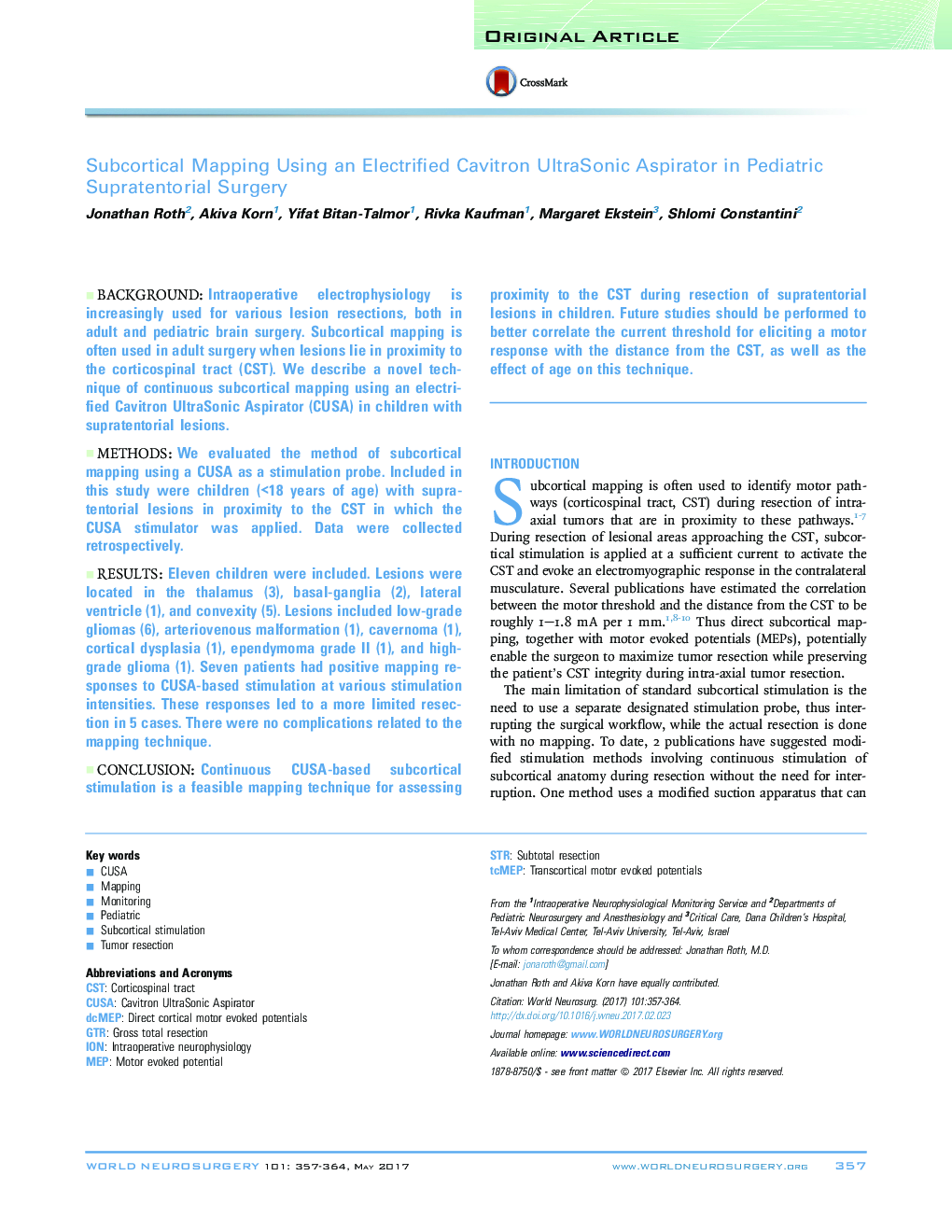| Article ID | Journal | Published Year | Pages | File Type |
|---|---|---|---|---|
| 5634116 | World Neurosurgery | 2017 | 8 Pages |
BackgroundIntraoperative electrophysiology is increasingly used for various lesion resections, both in adult and pediatric brain surgery. Subcortical mapping is often used in adult surgery when lesions lie in proximity to the corticospinal tract (CST). We describe a novel technique of continuous subcortical mapping using an electrified Cavitron UltraSonic Aspirator (CUSA) in children with supratentorial lesions.MethodsWe evaluated the method of subcortical mapping using a CUSA as a stimulation probe. Included in this study were children (<18 years of age) with supratentorial lesions in proximity to the CST in which the CUSA stimulator was applied. Data were collected retrospectively.ResultsEleven children were included. Lesions were located in the thalamus (3), basal-ganglia (2), lateral ventricle (1), and convexity (5). Lesions included low-grade gliomas (6), arteriovenous malformation (1), cavernoma (1), cortical dysplasia (1), ependymoma grade II (1), and high-grade glioma (1). Seven patients had positive mapping responses to CUSA-based stimulation at various stimulation intensities. These responses led to a more limited resection in 5 cases. There were no complications related to the mapping technique.ConclusionContinuous CUSA-based subcortical stimulation is a feasible mapping technique for assessing proximity to the CST during resection of supratentorial lesions in children. Future studies should be performed to better correlate the current threshold for eliciting a motor response with the distance from the CST, as well as the effect of age on this technique.
